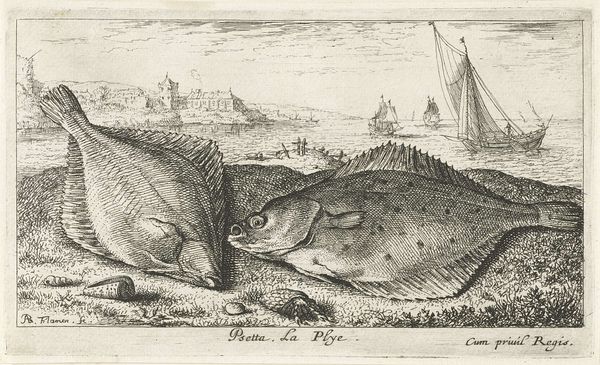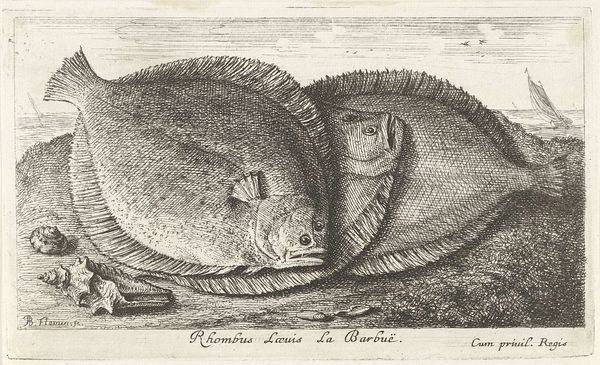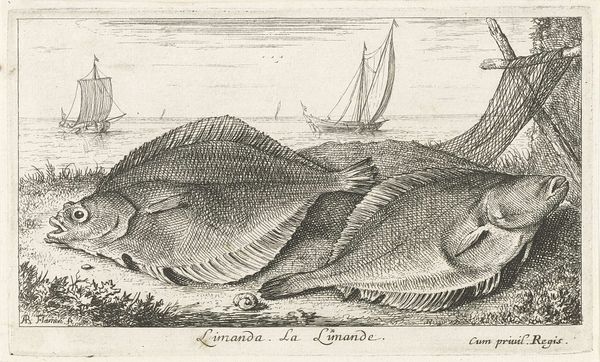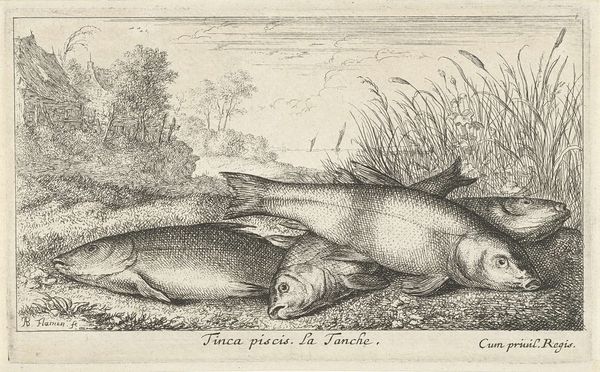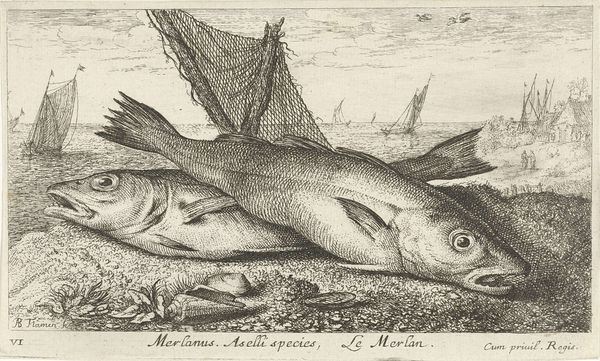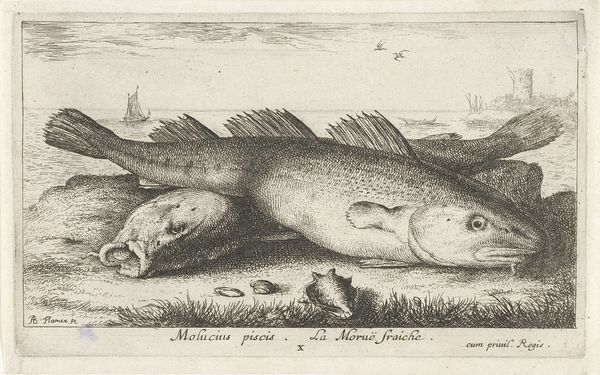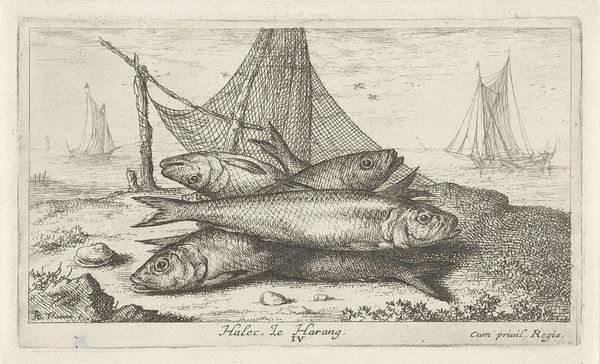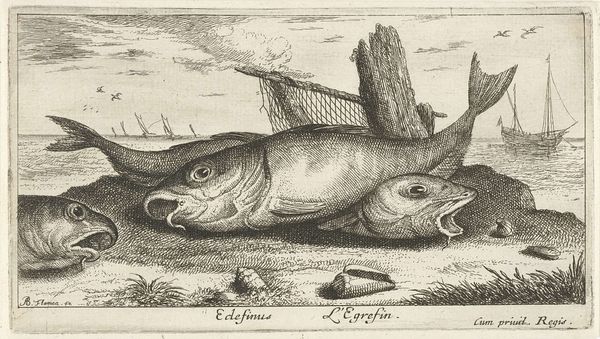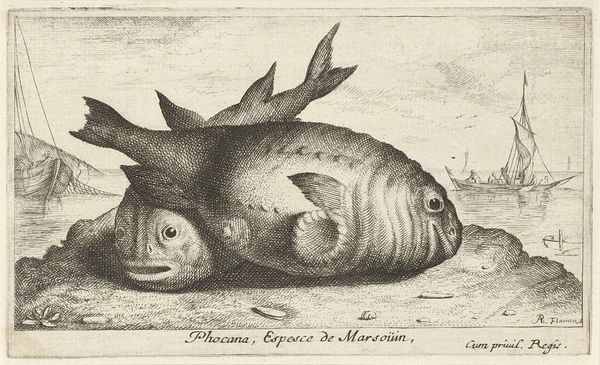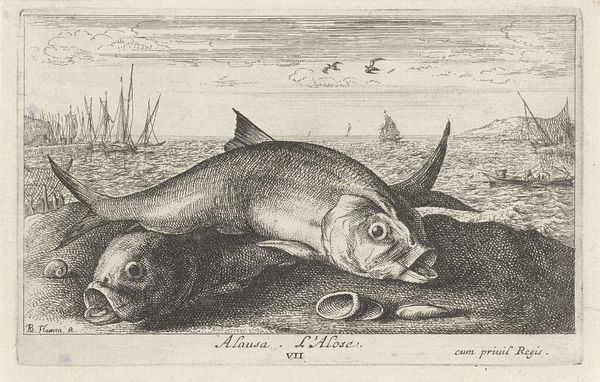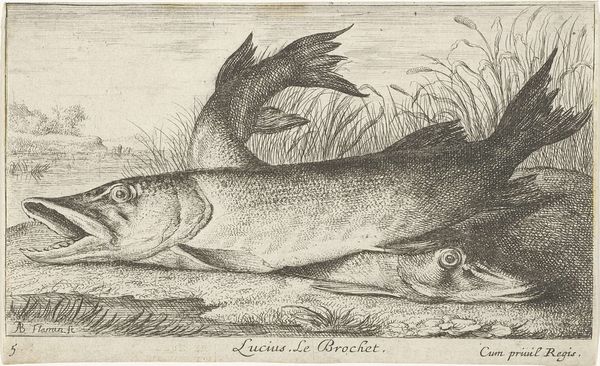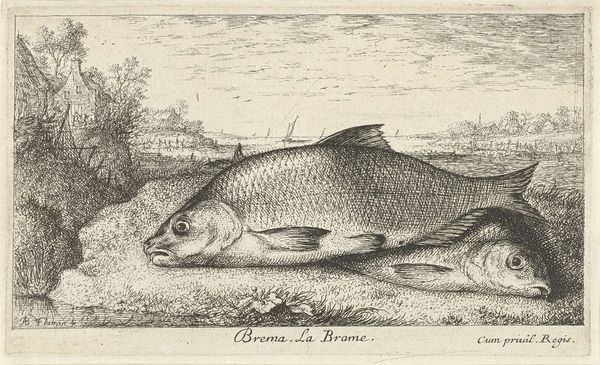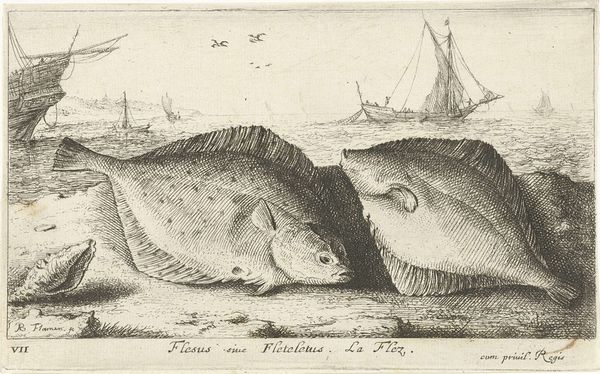
print, engraving
#
dutch-golden-age
# print
#
old engraving style
#
landscape
#
figuration
#
history-painting
#
engraving
#
realism
Dimensions: height 105 mm, width 173 mm
Copyright: Rijks Museum: Open Domain
Curator: Let's take a look at this fascinating print, "Two Turbot on the Beach," crafted around 1664 by Albert Flamen. What are your initial thoughts? Editor: I am immediately struck by the textural contrasts—the coarse, almost chaotic, rendering of the shoreline juxtaposed against the smoother surfaces of the fish. Notice also how Flamen uses the fine, etched lines to suggest volume, light, and the sheer materiality of these turbot. Curator: Yes, there's a potent juxtaposition there. Fish have carried significant symbolic weight throughout history, representing fertility, abundance, and the sea's bounty. Could these turbot be alluding to the Dutch Republic's maritime prosperity at the time? Fish, then and now, held cultural and economic meaning. Editor: Undoubtedly. The almost obsessive detail in depicting these creatures extends to the surrounding elements—the scattering of shells, the distant ships. One sees how meticulously observed these are. Curator: What I find compelling is the underlying cultural memory embedded within such imagery. Seascapes, maritime trade, a specific Dutch identity – they are all coded into this simple engraving. What messages did the artist wanted to transmit? Is there a celebration of resources and human resilience during that historical period? Editor: That is where I question the overall intention behind such piece. To me, its merit and purpose may lie solely in a celebration of forms rather than cultural iconography, even at expense of expressiveness. We should bear in mind that still lifes were very popular at the time, so natural observation may be the sole purpose of this exercise. Curator: A potent observation nonetheless. So, Flamen has provided a lens through which to reflect on both art and maritime themes. Editor: Yes, his meticulous craftsmanship provides endless opportunities to decipher signs and techniques within it.
Comments
No comments
Be the first to comment and join the conversation on the ultimate creative platform.
